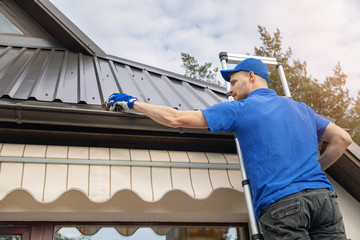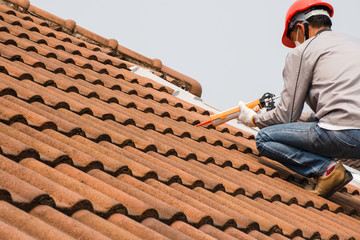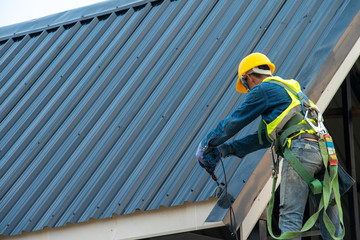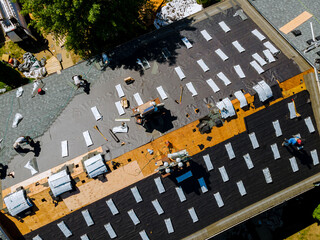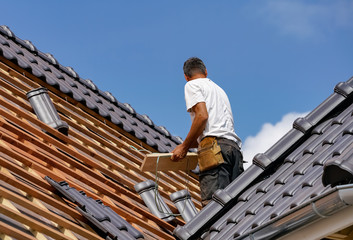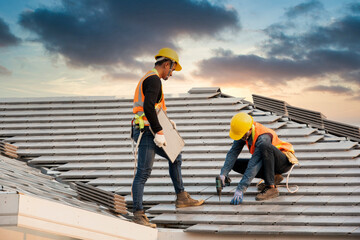Roofers Port Charlotte is a complex system that includes roof decking (sheathing), underlayment, flashings, ventilation products, and shingles. It requires specialized knowledge and carries serious health and safety risks for workers.
A field-applied coating or cap sheet with mineral surfacing should be specified to prevent surface cracking from exposure to ultraviolet radiation.
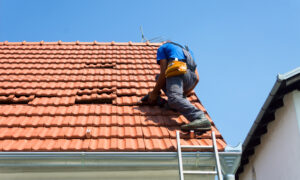
Your roof protects the interior of your home from harsh weather conditions. Without your roof, you would be exposed to rain, snow, sleet, sun, and extreme temperatures that can cause damage like mold, mildew, and sagging ceilings or walls. Your roof is also a barrier that keeps debris and insects from entering your home.
In addition to preventing moisture, a well-installed roof will insulate your home and reduce energy bills. It keeps the cold air out in winter and the hot air out in summer, decreasing the work your HVAC system must do to maintain your home comfortable.
A roof’s insulation also helps you save on your electricity bill by keeping heat from escaping into the attic. This can prevent overheating and wood rot. A good roof will also feature soffit vents that let the air out to ventilate your attic properly. Lastly, a roof should have fascia boards that run along the edges of the roof. These can be made of various materials, including low-cost treated wood and more aesthetically pleasing composite or vinyl materials.
Insulation is a great way to protect your home from the elements. Not only does it help keep the warm air in during the winter and cool air in the summer, but it also helps cut down on energy costs. This is because insulation provides resistance to heat flow, which allows you to lower your heating and cooling bills.
The type of insulation you choose to use will determine how well it does its job. A few different types of insulation are available, including fiberglass, cellulose, and spray foam. Fiberglass and cellulose are made from recycled materials, a plus for environmentally-conscious homeowners. Cellulose insulation is especially effective in small spaces since it can fill gaps and crevices better than other types of insulation.
To maintain a comfortable indoor temperature, your air conditioning system must replace the heat gained during the day, and your heating system must remove the heat lost at night. However, this process is much less frequent if you have properly insulated your house. This helps save on your energy bills and reduces the time your system has to run.
One of the most important functions of insulation is to help prevent condensation and mold growth. This is because excess moisture can lead to mold and mildew growth, which can cause serious damage to your home. This is why it’s important to have proper insulation in your house. Insulation can help prevent condensation from occurring in the first place, and it can also absorb some of the moisture that does occur.
Aside from helping to prevent condensation and mold, insulation can also help reduce the amount of sound that travels between different rooms in your house. This makes it easier for you and your family to enjoy a quieter and more peaceful home environment. Living near an airport or other noisy locations can be particularly beneficial. Insulation is an affordable and simple feature that can make a big difference in your home, so don’t delay installing it.
When homeowners think about enhancing their home’s aesthetic, they often focus on things like a fresh paint job, new landscaping, or paver driveways. While these are all worthwhile investments that can increase the value of a property, the roof is an equally important part of the overall appearance that’s sometimes called “curb appeal.”
Curb appeal is more than just how your home looks; it’s also the impression it gives those who see it from the street. A well-maintained, visually appealing roofing system reflects the care you put into your home and signals potential buyers that you are an attentive homeowner.
The color of your roof is one of the most influential factors in determining curb appeal, as it can either contrast or complement the colors of other exterior features like the siding, trim, and shutters. Wood shingles and shakes are classic choices that can add a rustic charm to a traditional or modern home, while clay tiles offer a gorgeous texture to any house.
Another way to boost your home’s curb appeal is to ensure the roof is free of stains or discoloration. Professional cleaning services can help remove moss, mold, algae, and dirt from your roof and give it a more polished look. Maintaining your roof’s beauty also helps to extend its lifespan.
In addition to ensuring that your roof is in good condition, routine professional maintenance can help you maintain peak curb appeal. By addressing issues as they arise, you can prevent them from becoming more serious and affecting the integrity of your roof. In addition, a well-maintained roof is more attractive to potential buyers and will help you sell your home promptly at a good price.
Whether you’re looking to upgrade your home or want to improve its curb appeal, there are many benefits to installing a quality roofing system. Make sure you take the time to research the different types of roofing available and find the best fit for your property. You’ll be glad you did when your beautiful new roof catches the eye of passersby!
A well-maintained roof protects your home from rain, snow, wind, and extreme temperatures and adds value. Whether you plan to sell your home in the future or not, upgrading to a new roofing system can increase its overall value.
When reroofing your home, choose the appropriate shingle types and styles to meet local building codes. Choosing premium shingles that offer energy efficiency and added insulation can help keep your home cooler in the summer and warmer in the winter. Some shingles are also rated for fire resistance. Ask your roofing contractor about the different shingle options available to you and what type of shingle is best for your home.
New roofing helps to raise a home’s value and can make it easier to find buyers. Potential buyers will not be interested in a home with a debilitated roof, and even if they are willing to pay your asking price, they may expect a discount because of the high cost of a new roof. The value of a home can be affected by local housing market conditions, so it’s important to consult with real estate agents and appraisers about the current state of the area’s markets before investing in a new roof.
Roofing professionals can help find the perfect aesthetic for any property by consulting with the client and exploring their options. It’s helpful to look for inspiration from the surroundings and identify which features stand out. For example, if trees and other natural landscapes surround the home, a more earthy color scheme can blend in and complement the surrounding environment. Conversely, a more contrasting shingle hue can create a dramatic, eye-catching statement if the house is a modern, contemporary home with bold colors and sleek shapes.
Other design elements like skylights, dormers, and chimneys also play a role in the overall aesthetic of a roofing system. These additions can provide character and charm and break up large roof surfaces, creating a well-designed exterior for the entire building. Additionally, roofing materials can be laid in various patterns, including herringbone, and staggered to add visual interest.
Aesthetics are important for roofing because they make a lasting impression on visitors and passersby. A beautiful roof conveys a sense of quality and attention to detail, an important message for homeowners and business owners alike. Furthermore, an attractive roof can increase the value of a building and encourage people to take pride in their property. It’s also a great way to attract potential customers and tenants.


